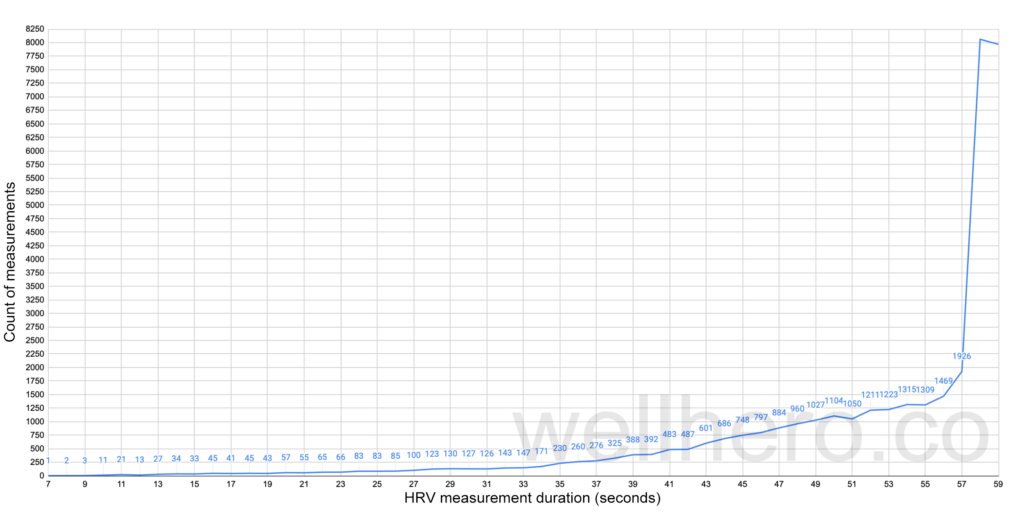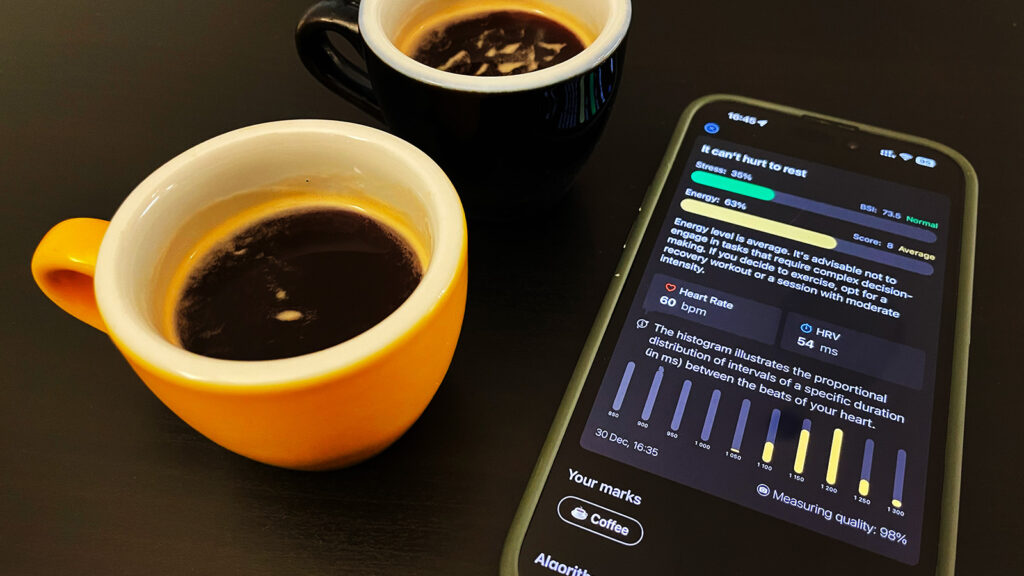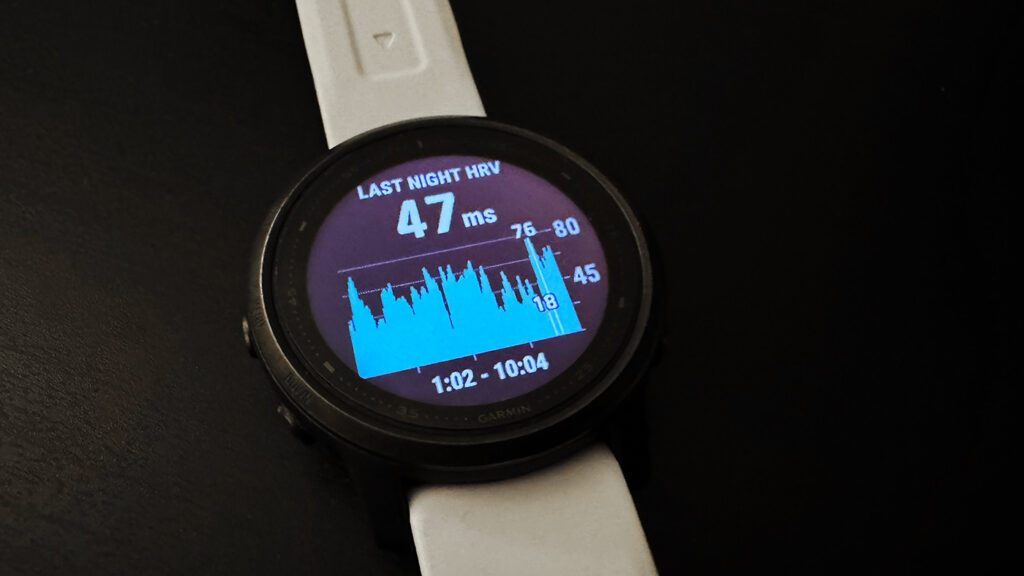HRV (Heart Rate Variability) is one of the most reliable ways to assess the state of a person’s nervous system. Any modern wearable device, whether it’s a watch, bracelet, or ring, measures stress levels or readiness for exercise based on HRV. Apple Watch is no exception. Although the watch itself does not calculate stress or recovery levels, it collects all the necessary HRV data from automatic HRV measurements, which can be analyzed by third-party app developers. But how trustworthy are these measurements?
Let us clarify upfront that this article is about automatic measurements. Manual measurements using the Mindfulness app work perfectly fine.
Automatic HRV Measurements Using Apple Watch
As of the publication of this article (latest firmware version: WatchOS 10), Apple Watch can measure HRV (Heart Rate Variability) automatically.
Here’s what we know about automatic measurements.
- Frequency and Timing of Measurements:
- The device measures HRV approximately once every 2-5 hours.
- The watch determines the most suitable time for measurement when the wearer is at re
- Neither users nor app developers can control this timing.
- Duration of Measurements:
- The measurement duration is not adjustable.
- Typically, it does not exceed one minute, though it can be shorter.
Everything looks good, but is it really as good as it seems?
Potential issues with automatic HRV measurements using Apple Watch
What unpredictable HRV measurement times can lead to
As you already know, HRV needs to be measured in a completely calm environment, preferably in the morning, and it’s entirely pointless to do this right after an intense workout.
Now, imagine this situation: you return from a bike ride, most likely using a cycling computer like Garmin or Wahoo, and you’re not tracking the workout with your watch. After returning, you rest while giving kudos on Strava to your entire group, and during this time, your Apple Watch might take a measurement.
The same issue can apply to other factors affecting HRV: for example, if you had coffee or alcohol, the Apple Watch would not be aware of this and would proceed with the measurement. When measuring manually, you could flag such a measurement as unsuitable for calculating the baseline.
What will most stress and recovery analysis apps do? They will send you a notification: “You are stressed!” (surprising, right?). But this isn’t the real issue. The problem is that this measurement could be used to calculate your baseline level, meaning that all results above this very low post-workout value will be perceived as excellent condition.
Random measurement duration
HRV measurements are best performed over a longer duration. Measurements lasting less than 5 minutes are considered ultra-short-term.
Shorter measurement times lead to less accurate results. When we use a camera or Bluetooth heart rate monitor, we collect 100 intervals between beats for analysis. For measurements with the Apple Watch using the Mindfulness app, we recommend setting the duration to 2-3 minutes.
Automatic measurements never last longer than a minute. Moreover, some measurements last only a few seconds.
We recently analyzed 40,000 measurements from our users. Here is the duration of those measurements. We excluded measurements longer than a minute because they were not automatic but results of manual measurements using the Mindfulness app.

As you can see, some measurements are so short that they are unreliable. Wellhero ignores automatic measurements shorter than 55 seconds to improve accuracy. But do other analysis apps do the same?
Outliers and gaps
When you measure HRV manually, you are aware that you need to remain still during the measurement. However, when the Apple Watch initiates a measurement, you are not notified, and your movements can interfere with the accuracy and distort the duration of some intervals between beats (in HRV measurements, millisecond differences are crucial).
The watch detects some of these distortions and informs the app developer about the number of gaps during the measurement. However, some intervals may still pass the Apple Watch’s filter. At Wellhero, we apply stricter interval filtering and discard any suspicious data. As a result, SDNN values in the Health app might differ from the SDNN values calculated by us, as we aim for greater accuracy.
Low measurement frequency and Afib issues
Measuring once every 5 hours is quite infrequent, especially when you cannot choose the exact time. To increase the number of automatic measurements with the Apple Watch, some users enable Atrial Fibrillation monitoring. By enabling the AFib (Atrial Fibrillation) history option in the Health app and then enabling the same option in the Heart section of the Watch settings, measurements will be performed several times an hour.
However, this creates even more problems as described above – completely unpredictable measurement times and lower accuracy, since HRV will be just a byproduct of the Atrial Fibrillation detection.
Based on our analysis, most poor-quality automatic measurements were a result of using the AFib History function for measurements. Please use this function only if you truly want to detect Atrial Fibrillation issues. For HRV measurements, it is much better to use manual measurements.
Conclusions about automatic measurements via Apple Watch
While the Apple Watch is an excellent tool for measuring HRV using the Mindfulness app, caution should be exercised with automatic measurements, and such measurements should be carefully filtered.
This is especially critical during intense training periods or in hot environmental conditions (as sweat can also reduce accuracy).
For a more accurate picture, we recommend performing manual measurements using a phone camera, Bluetooth heart rate monitor, or the Apple Watch with the Mindfulness app. All these methods will provide a more precise and predictable result.

